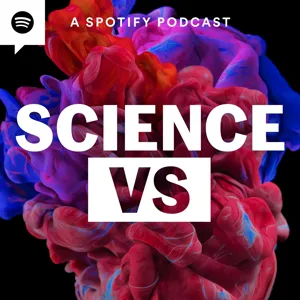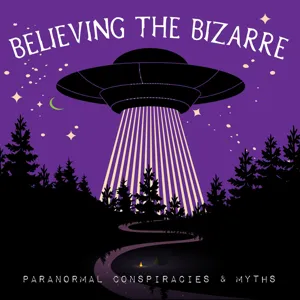Podcast Summary
UFOs and Alien Encounters: Recent Developments in US Congress and Mexico: Recent US Congress hearings have discussed UFO sightings and alleged alien recoveries, with a former intelligence officer claiming possession of nonhuman biologics. In Mexico, a journalist presented supposed alien remains, leading NASA to study UFOs further.
UFOs, or Unidentified Aerial Phenomena, have gained significant attention from both the US government and the public. This year, there have been multiple hearings in the US Congress regarding UFO sightings and alleged recoveries of alien bodies. A former intelligence officer testified about a secret program dealing with alien craft and even claimed to have nonhuman biologics. Additionally, a journalist presented supposed alien remains at a Mexican congressional hearing. These developments have fueled the belief that aliens have visited Earth and have led NASA to study these phenomena. Despite the skepticism, the increasing seriousness surrounding UFOs warrants further scientific investigation.
U.S. Navy Pilots Reported Seeing Unidentified Objects: Pilots' reports of Tic Tac-shaped UAP off San Diego coast, corroborated by radar data, intrigued skeptical podcast hosts to investigate further
The hosts of the podcast had previously been skeptical about UFOs or Unidentified Aerial Phenomena (UAP) due to past experiences where most reported sightings turned out to be mundane objects. However, they became intrigued by one particular case from 2004 involving US Navy pilots who reported seeing Tic Tac-shaped objects off the coast of San Diego. The pilots described the objects as moving erratically and disappearing suddenly, and their reports were corroborated by radar data and other pilots. Despite initial skepticism, the hosts plan to explore this case further, acknowledging that while most UAP sightings can be explained, the remaining unexplained cases deserve closer examination.
UFO Sightings with Unnatural Movements Baffle Scientists: Reports of UFOs with unnatural movements on radar and video have intrigued scientists, who calculated implausible acceleration from descriptions. Military response is unclear.
There have been numerous reports of unidentified flying objects (UFOs) that have been captured on radar and video, with some witnesses claiming they moved in ways that defy current scientific understanding. For instance, one witness reported seeing "rain" of UFOs on an aircraft carrier radar, while another pilot recorded a video of a Tic Tac-shaped object moving inexplicably using an infrared camera. The descriptions of these objects as moving in unnatural ways, such as moving slowly at high altitudes and then rapidly dropping to sea level, have piqued the interest of scientists like physics professor Kevin Knuth. Despite not having access to the original radar data, Knuth used the reports to calculate the objects' acceleration and found it to be implausibly high. The Navy and Pentagon have been contacted about this phenomenon but have yet to provide a response. The unexplained nature of these observations and the military's response raises questions about the potential significance of these events.
Tic Tac UFO sighting unlikely to be an alien spacecraft: Despite intriguing claims, lack of solid evidence makes it unlikely that the Tic Tac UFO sighting was an alien spacecraft
The Tic Tac UFO sighting, as intriguing and seemingly inexplicable as it may be, is likely not an alien spacecraft. The acceleration speeds mentioned in the discussion are beyond current technological capabilities and would have devastating effects on both aircraft and human bodies. Astrophysicist Sarah Webb, who specializes in red dwarf stars and communicates science to the public, was skeptical of the Tic Tac being an alien spacecraft. She believes that the lack of solid evidence, including eyewitness reports, videos, and radar data, makes it unlikely. While the mystery of unidentified flying objects remains intriguing, it's crucial to approach such claims with a healthy dose of skepticism and a strong foundation of evidence.
Assumptions about UFO sightings may be unreliable: Eyewitness testimony, radar data, and videos are not always reliable evidence for UFO sightings. Human perception can be misleading, and it's crucial to examine each piece of evidence independently to assess its credibility.
The assumption that three pieces of evidence regarding a supposed UFO sighting describe the same event may not be valid. These pieces of evidence, which include eyewitness testimony, radar data, and a video, may not be as reliable as previously assumed. Eyewitness testimony, in particular, has been shown to be unreliable, especially when witnesses are far away from the object and have no reference points. For instance, pilots who reported seeing the Tic Tac UFO were estimating its size from a great distance, which is known to be difficult for humans. Additionally, a recent analysis of a different UFO video released by the Department of Defense revealed that the object was much farther away and moving much slower than initially thought, demonstrating how human perception can be misled. Therefore, it is essential to examine each piece of evidence independently to assess its credibility and merit.
Interpreting UFO evidence: A subjective and complex process: Approaching UFO evidence with a critical and open-minded perspective is essential, acknowledging potential biases and limitations. A multidisciplinary approach combining various forms of evidence and collaborating across fields is necessary for accurate and reliable conclusions.
The interpretation of evidence, especially in the context of unexplained phenomena like UFOs, can be subjective and influenced by various factors such as human perception, assumptions made during analysis, and the reliability of data sources. For instance, in the case of the Tic Tac UFO incident, the different interpretations of the same video by two researchers were due to their contrasting assumptions about the object's motion. Similarly, the radar data, which is often used as evidence for UFO sightings, can be unreliable due to false positives and other sources of error. Therefore, it's crucial to approach such evidence with a critical and open-minded perspective, acknowledging potential biases and limitations. As Kevin, one of the researchers involved in the discussion, pointed out, dismissing data that contradicts our expectations can be a pitfall. Ultimately, the investigation into UFOs requires a multidisciplinary approach, combining various forms of evidence and collaborating across different fields to arrive at more accurate and reliable conclusions.
Maintaining an open mind in the search for alien life: While the search for alien life is complex and ongoing, it's important to keep an open mind and recognize that the bar for evidence should be higher for extraordinary claims. Scientists continue to make strides in this field, with the discovery of exoplanets opening up new possibilities.
While we may have biases in evaluating claims of extraordinary evidence, such as the existence of UFOs or alien life, it's important to keep an open mind and recognize that the bar for evidence should be higher for such claims. The search for alien life is a complex and ongoing process, and scientists are making significant strides in this field despite the challenges. The discovery of exoplanets has opened up new possibilities and reduced the stigma surrounding this research. While we may not have definitive evidence for UFOs or aliens yet, the excitement and curiosity surrounding this topic remain high, and scientists continue to explore the possibilities. The quest for discovering alien life is a testament to human curiosity and our drive to explore the unknown.
The discovery of exoplanets has expanded our search for life beyond our solar system: With billions of potentially habitable planets in the universe, the odds of finding another technological civilization are high
The discovery of exoplanets has expanded our understanding of the universe, revealing that there are likely many planets with conditions suitable for life. The odds of humans being the only technological civilization in the history of the universe are extremely low, with estimates suggesting there have been 10 sextillion opportunities for life to develop. Scientists are using powerful telescopes and techniques like atmospheric characterization to search for signs of life on these planets, such as specific gases in their atmospheres that could indicate the presence of living organisms. The next generation of telescopes will allow us to search for biosignatures on planets much farther away, making this an exciting time for the search for extraterrestrial life.
Exploring technosignatures for detecting advanced civilizations: Scientists are broadening their search for extraterrestrial life by looking for technosignatures, indicators of advanced civilizations and their technological presence, such as alien pollution like CFCs.
Scientists are expanding their search for signs of extraterrestrial life beyond biosignatures, and are now looking for technosignatures, which are indicators of advanced civilizations and their technological presence. During a 2018 NASA conference, scientists discussed various ideas for detecting technosignatures, including alien pollution such as chlorofluorocarbons (CFCs), which are man-made and still present in Earth's atmosphere. While the discovery of a potential biosignature on an exoplanet is exciting, the search for technosignatures offers the potential for more definitive evidence of intelligent life beyond Earth.
Detecting signs of advanced alien civilizations using telescopes: Scientific advancements enable us to identify unusual atmospheric compositions and megastructures, potentially indicating advanced alien civilizations, which are now being taken seriously in the scientific community
Our technological advancements have reached a point where we can now detect potential signs of advanced alien civilizations using telescopes like the James Webb Space Telescope. This includes the ability to identify unusual atmospheric compositions that could indicate the presence of chlorofluorocarbons or even signs of megastructures, which are hypothetical large-scale engineering projects built by alien civilizations. A false alarm a few years ago demonstrated that such claims are now being taken seriously in the scientific community. This shift in perspective reflects the increasing sophistication of our scientific exploration and the need to consider the possibility of extraterrestrial life when interpreting data from space. Additionally, every claim made on the podcast is supported by scientific citations, allowing listeners to verify the information for themselves.
Discovering the International Space Station: Staying alert and open-minded can lead to unexpected discoveries, even during seemingly ordinary activities.
Even during a seemingly uneventful observation, important discoveries can be made. During a five-day expedition off the coasts of Laguna Beach and Catalina Island, the team was on the lookout for unusual objects in the sky. Their first discovery was none other than the International Space Station. This finding serves as a reminder that keeping an open mind and maintaining a diligent watch can lead to unexpected and exciting discoveries. So, whether you're listening to podcasts for entertainment or embarking on a skywatching adventure, always be prepared for the unexpected. And don't forget to follow us on Spotify for more intriguing stories!




